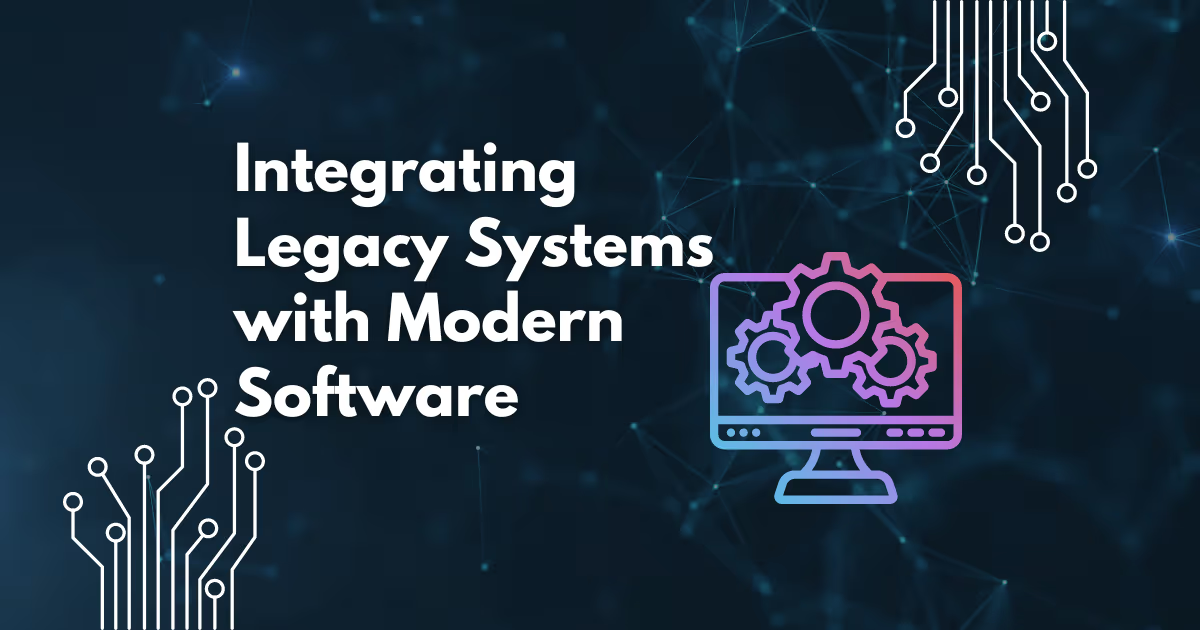Introduction to Enterprise Application Platforms and Legacy Systems;
In today’s fast-paced business world, agility and innovation are paramount. Organisations increasingly rely on Enterprise Application Platforms (EAPs) to streamline processes and enhance collaboration. However, many companies find themselves grappling with the challenge of integrating these modern platforms with their legacy systems.
Legacy systems, while often still functional, can hinder a company’s ability to adapt and grow. They may be outdated technologies that don’t communicate well or efficiently with newer applications. This gap presents both obstacles and opportunities for businesses looking to thrive in an ever-evolving digital landscape.
What are the Challenges of Integrating Legacy Systems with EAPs?
Integrating legacy systems with enterprise application platforms (EAPs) often poses significant challenges. One of the primary hurdles is technological compatibility. Legacy systems may use outdated technologies that struggle to communicate with modern EAP architectures.
Technological and Compatibility Issues:
Integrating legacy systems with enterprise application platforms often brings a host of technological challenges. One major hurdle is compatibility. Older systems may not support modern protocols, leading to communication breakdowns.
Outdated hardware can also present significant barriers. If your organisation relies on ageing infrastructure, performance issues are likely to arise when interfacing with new applications.
Moreover, security concerns play a critical role in integration efforts. Legacy systems often lack robust security features required by newer platforms, increasing vulnerability risks during the integration process.
Data Migration Difficulties:
Data migration is one of the most daunting challenges when integrating legacy systems with enterprise application platforms.
Legacy systems often house vast amounts of data, which can be inconsistent or poorly structured. This makes it difficult to extract and clean the necessary information for seamless integration. Moreover, differences in data formats and storage methods complicate matters further. Mapping old data schemas to new ones requires careful planning and execution.
Another hurdle arises during actual migration. Downtime can lead to disruptions in business operations, and ensuring that all crucial data is transferred without loss becomes a top priority.
User Adoption Challenges:
User adoption can be a significant hurdle when integrating legacy systems with enterprise application platforms. Employees often feel apprehensive about new technologies. Familiarity with older systems creates resistance to change.
Training is essential, yet it’s frequently overlooked. Without proper guidance, users may struggle to adapt. This leads to frustration and decreased productivity. Cultural factors also impact adoption rates. An organisation deeply rooted in traditional processes might find its employees hesitant to embrace new methods or tools.
Involving end-users early on can mitigate some challenges. Gathering feedback during the integration process fosters a sense of ownership and eases the transition for everyone involved.
Solutions for Successful Integration;
Utilising middleware technologies can bridge the gap between legacy systems and modern enterprise application platforms. These tools facilitate communication, allowing disparate systems to exchange data smoothly.
- Utilising Middleware Technologies
Middleware technologies act as a bridge between legacy systems and modern enterprise application platforms (EAPs). They facilitate communication by translating different data formats and protocols. This translation is crucial when dealing with disparate systems that may not speak the same language.
By implementing middleware, organisations can streamline processes and reduce complexity. It enables real-time data exchange, allowing for a more efficient workflow. As a result, teams can access up-to-date information without manual intervention. Choosing the right middleware solution tailored to your organisation’s specific needs is essential for successful integration. It helps in minimising disruption while maximising functionality across platforms.
- Implementing Service-Oriented Architecture (SOA)
Implementing Service-Oriented Architecture (SOA) is a game changer for integrating legacy systems with Enterprise Application Platforms. SOA allows different services to communicate seamlessly, breaking down silos in your organization.
By defining clear service interfaces, organisations can connect various applications without major rewrites. This flexibility reduces the need for extensive modifications to existing legacy systems while enabling new functionalities. Moreover, SOA promotes reusability. Once a service is created, it can be leveraged across multiple projects or departments. This not only speeds up development but also minimises redundancy and lowers costs over time.
Investing in training for staff about SOA principles ensures that teams are equipped to maximise this framework’s potential effectively.
- Using API Management Tools
API management tools play a crucial role in bridging the gap between legacy systems and modern enterprise application platforms. They streamline communication, ensuring that data flows seamlessly across various applications.
These tools help organisations monitor and control API usage effectively. This oversight is essential for maintaining security while facilitating smooth integrations. With built-in analytics, businesses can gain insights into performance metrics, helping to identify bottlenecks. Moreover, robust documentation features support both internal teams and external partners. Clear guidelines make it easier for users to understand how to interact with different components of the ecosystem without confusion or errors.
Best Practices for Integrating Legacy Systems with EAPs;
Assessing legacy systems is crucial before any integration effort. Understanding their architecture and capabilities helps identify potential roadblocks early on.
Conducting a Thorough Assessment of Legacy Systems: Understanding your legacy systems is the first step toward successful integration. Conducting a thorough assessment allows you to identify strengths, weaknesses, and potential pitfalls. Next, evaluate performance metrics. Are these systems meeting current business needs? Outdated technology can hinder efficiency and innovation.
Don’t forget user feedback; those who work directly with these systems often have valuable insights into their usability and limitations.
Prioritising Integration Needs and Goals: When integrating legacy systems with enterprise application platforms, it’s crucial to identify your organisation’s specific needs. Every business has unique processes and requirements that drive success. Start by assessing which functionalities are essential for daily operations. Engage stakeholders from various departments to gather insights on their priorities.
Remember that not everything can be tackled at once. Prioritise tasks based on impact and feasibility. This strategic approach ensures resources focus on what matters most first, paving the way for a smoother transition throughout the integration process.
Creating a Detailed Integration Plan: Creating a detailed integration plan is essential for bridging legacy systems and enterprise application platforms. Start by mapping out existing processes and identifying where integrations will occur.
Next, outline specific objectives that align with your organisation’s goals. This sets expectations for stakeholders from the outset. Consider involving key team members in brainstorming sessions. Their insights can help pinpoint potential challenges or areas of resistance early on. Lastly, prioritise documentation throughout the process. This becomes a valuable resource for troubleshooting down the line and aids future staff onboarding efforts.
Real-Life Examples of Successful Integration;
One notable success story is that of a large retail chain. They faced significant challenges integrating their legacy inventory system with a modern enterprise application platform. By employing middleware solutions, they streamlined data flow and improved stock management across all locations.
Another example comes from the healthcare sector. A hospital network merged its outdated patient record systems into an advanced EAP. This integration allowed for real-time access to patient information, enhancing care delivery while meeting compliance regulations. In the finance industry, a banking institution successfully deployed API management tools to connect its legacy systems with new online services. This not only facilitated smoother transactions but also enriched customer experience through faster service delivery.
These examples illustrate how strategic approaches can transform integrations into pathways for innovation rather than obstacles to progress. Each case highlights unique challenges met with tailored solutions, showcasing what’s possible when organisations commit to evolution.
Conclusion:
Properly integrating legacy systems with enterprise application platforms is crucial for businesses looking to thrive in today’s fast-paced digital landscape. Legacy systems often hold valuable data and processes, but they can become obstacles if not integrated effectively. Addressing the challenges associated with this integration, such as technological compatibility, data migration issues, and user adoption, is essential for ensuring a smooth transition.
Utilising middleware technologies, implementing service-oriented architecture (SOA), and leveraging API management tools can pave the way for successful integration. Best practices like conducting thorough assessments of legacy systems and creating detailed integration plans will further enhance the process. By focusing on proper integration strategies today, companies position themselves to adapt more easily to future changes while maximising their existing investments in technology. The journey may have its challenges, but the rewards of effective legacy system integration are well worth it.











